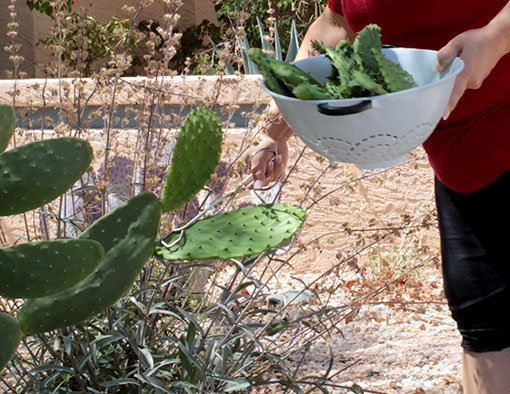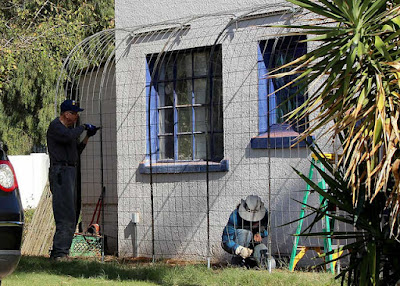 |
| Jennifer Layton, owner of Yellow Boots Yard Care |
Are you feeling a bit overwhelmed by the amount of spring gardening chores you need to get done? Tree feeding, pruning, mulching, replenishing garden beds, planting, and maybe even grafting? Or are you planning your summer vacation and wondering who you can trust to care for your garden while you are away? Yellow Boots Yard Care can help you!
While most landscape maintenance and yard care companies are "blow-and-go" operations that just mow lawns, trim bushes and blow leaves, Yellow Boots offers more specialized care needed by vegetable gardeners and fruit growers. Owner, Jennifer Layton, is an experienced gardener and is in the Landscape Horticulture Program at Mesa Community College. Jennifer is the brains behind the operation and her husband Kimball is the brawn. Together they make an awesome gardening team. The proof is in their own yard where they have healthy tropical fruit trees, stone fruit trees, and 8 bountiful vegetable garden beds.
 |
Hoop structure over very happy and healthy mango trees in Layton's garden,
provides cold protection in winter, and shade protection in our hot summer months.
The Layton's dog Nora warns me to stay away from her mango trees! |
The Layton's have 104 fruiting varieties in their yard (10 vines, 32 grafts, 62 main trees). Most of their trees are tropical - 16 mangoes, 4 avocados, and 1 lime tree with 11 grafts on it! These two avid gardeners have experience with plant and tree installation, flood irrigation management, foliar feeding, cold protection of tropicals, shade structure construction, organic pest management, fruit tree pruning, and garden rehabilitation.
 |
Kimball Layton grafting Black Mission Fig scions on to my Kadota Fig tree
under the supervision of my fearless garden-guard dog, Buster Brown. |
In February I was dreading having to make the decisions of what to prune off of my dwarf fruit trees and grape vines, so I called in Yellow Boots Yard Care to help. I also wanted to graft more varieties onto my fruit trees. Jennifer and Kimball did a great job, handling my young fruit trees with the care and attention to detail that they provide their own trees. Kimball even brought scions for my trees and grafted them on using the Tongue and Whip method. So far all of the grafts look good!
 |
My Fuji Apple (high chill hours) tree now has Anna's Apple (low chill hours)
grafted on! Now I have a much better chance of getting fruit from this tree!! |
I originally met the Layton's at a grafting workshop hosted by Don Olson at
Greenlife Tropical Nursery. Expert fig grower Jeannine Sander demonstrated how to graft. From there Kimball went on to learn more grafting techniques from local expert tree grafter Jason van dem Bemd. Together they grafted over 50 varieties of apple scions onto the Layton's huge Anna's apple tree!
 |
| The Layton's 20+ year old Anna's apple tree glistens with silver scion tags. |
So go ahead and plan that vacation, just be sure to schedule
Yellow Boots Yard Care to tend to your garden while you are away. Jennifer will even send you photos of your plants to reassure you that all is well at your homestead!
Yellow Boots Yard Care
(servicing the East Valley and Scottsdale)
https://yellowbootsyardcare.com/
(480) 250-9982
E-Mail - yellowbootsyardcare@gmail.com
If you are interested in grafting and looking for scions or have scions to share, check out Jason van den Bemd's Facebook group
Arizona Fruit Tree Scion Exchange.



















































